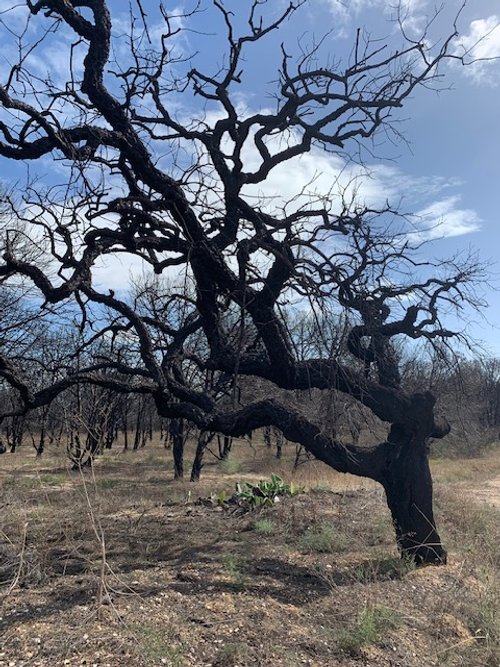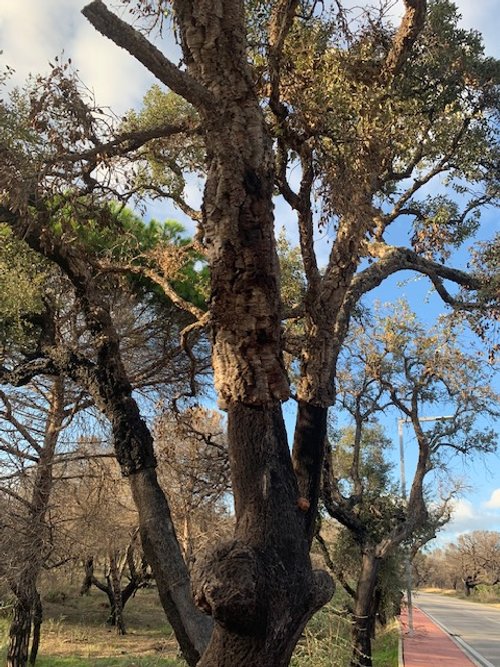Globally, wildfires are becoming more frequent and destructive due to climate change, reduced old-growth forests, and new construction developments encroaching on forests. In the Mediterranean, the climate has become hotter and dryer over the last half-century, making the land more susceptible to large and difficult-to-control fires. Increased fire danger is exacerbated by the increased quantity of fast-growing so-called "cash crops" like eucalyptus, which burn much more easily than native plants such as the cork oak tree.
So, how does the cork oak tree help limit severe fire seasons? The cork oak tree is well adapted to hot, arid, particularly fire-prone climates. This means it survives and thrives on less water than other types of trees and plants while using its extensive root structure to help prevent soil loss and increase soil water retention. This ensures fresh green growth of native grasses and plants, which are harder to burn than drier drought-plagued flora. The cork tree's wide, sturdy branches also help act as a windbreak, slowing winds, which are often a main driver of wildfires.







Cork trees:
Increase soil water retention
Decrease topsoil erosion
Act as a windbreak disrupting extreme wind-fueled fires
Promotes growth of native flora
In addition to how the cork oak tree positively impacts the environment around it, it is designed to survive normal and even healthy occasional fires. The outer bark of the cork oak tree is fire resistant and can act as a small fire break, slowing and, in the case of small brush fires, even halting the progress of the fire.
This begs the question: Can cork trees be beneficial in fire-prone areas outside the Mediterranean, such as the American West or Australia? We think so! Cork trees grow well in arid climates and are a significant drain on the available water in the region, making them ideally suited for drought-prone regions. Cork has been grown successfully on a small scale in California since the 1940s, but a more extensive cork forest in the most fire-prone areas could help reduce the damage fires cause while the earth runs its cleaning cycle.
Learn more about why cork forests are essential to the ecosystems in which they grow.
